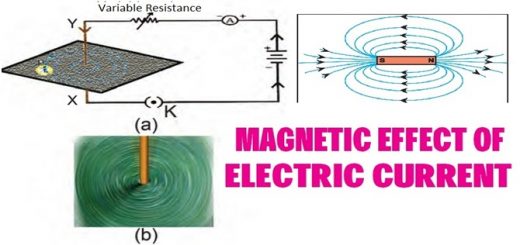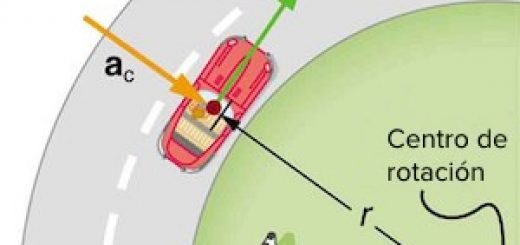Pure semiconductor crystal and ways of increasing the conductivity of semiconductors
Electronics play a key role in our life to transfer the information, entertainment, culture and also in war and in medicine to diagnose, prognosis or surgeries, Materials are classified according to their electrical conductivity into conductors, insulators and semiconductors.
Materials
Conductors are materials that conduct electricity and heat easily such as metals, Insulators are materials that do not conduct electricity and heat easily such as wood and plastic, Semiconductors are materials its conductivity is between insulators and conductors and are characterized by increasing their conductivity as their temperature increases such as silicon and germanium.
Pure semiconductor crystal
Each silicon atom (also germanium) contains 4 electrons in the outermost shell, Therefore, each silicon atom in the crystal shares 4 electrons with 4 neighboring atoms by covalent bonds to complete the outermost shell to 8 electrons and reaches the stable state, Crystal is a regular geometric arrangement of atoms in the solid state.
We can differentiate between three types of electrons:
- The innermost levels electrons: they are tightly bound to the nucleus.
- The valence electrons: they have to move freely across the interatomic distances.
- Free electrons: they move randomly and are limited by a larger space which is the crystal.
Thermal or light energy can be used to break the bonds of the crystal where the energy required to break the bond = The resulted energy from mending (recombining) the bond.
Ways of increasing the conductivity of semiconductors
Semiconductors are characterized by their sensitivity to heat and also impurities so, the conductivity of semiconductors can be increased in one of the two following ways:
- Raising the temperature.
- Doping (adding impurities).
Raising the temperature
At low temperatures (especially 0° K), all the bonds in the crystal are intact (unbroken) and there are no free electrons (insulating crystal), When the temperature increases, some bonds are broken and electrons are set free (conducting crystal), Such electrons leave behind a vacancy in the broken bond which is called a hole.
We do not call the silicon atom which loses an electron from its bond an ion, because soon enough, this atom may capture a free electron or an electron from another bond to fill its vacancy, Then, the atom returns neutral.
As the electrons move in a random motion, so do the holes, since electrons in the bond move around randomly to fill in vacancies, the direction of vacancies movement is in the opposite direction of the electron movement.
As the temperature increases, the number of free electrons and holes increases (increasing the conductivity), such that the number of free electrons equals the number of free holes in the pure semiconductor till a state of dynamic equilibrium is reached (called thermal equilibrium) at which the number of broken bonds per second will be equal to the number of bonds mended per second, so that a fixed number of free electrons and the same number of holes remain constant at every temperature and this case is called dynamic equilibrium.
The dynamic equilibrium (thermal) of pure silicon crystal is the case in which the number of broken bonds per second is equal to the number of bonds mended per second, so that a fixed number of free electrons and the same number of holes remain constant at every temperature.
The hole is the valency which the electron leaves behind (positive charge) in the broken bond in a semiconductor crystal, It is not prefered to heat the pure semiconductor to increase its electric conductivity, Because by increasing the temperature by a large amount leads to break the bonds and also the crystal will damage.
A pure semiconductor is a semiconductor in which the concentration of free electrons (n) = The concentration of holes (P) at any temperature.
The characteristics of pure semiconductor crystal (pure silicon)
- The electrons of the internal levels are bound by a very strong attraction force to the nucleus while the valence electrons in the outermost energy levels are free to move through the intermolecular distances inside the crystal.
- At very low temperatures (especially at 0° K), the bonds between the atoms are intact (unbroken) and there are no free electrons inside the crystal and the electric conductivity vanishes and the energy level of each atom is filled with electrons at absolute zero (zero Kelvin).
- When the temperature increases, some bonds are broken and electrons are set free each electron of these leave behind a vacancy in the broken bond which is called a hole but it isn’t considered an ion this atom may capture a free electron or an electron from another bond to fill its own vacancy, Then, the atom returns neutral.
- By increasing the temperature, the number of free electrons and the number of holes increases and the electrical conductivity increases.
- The electrons move in a random motion inside the crystal and fill the vacancies which result from breaking the bonds.
- The energy required to break any bond = The resulted energy from mending (recombining) the bond whatever it is thermal energy or light energy.
- When the crystal reaches to the dynamic equilibrium, the number of broken bonds in second = The number of formed bonds in second so, the number of free electrons and holes is constant for each temperature.
Conductors (metals): The crystal consists of positive ions and cloud of free electrons which move randomly inside the conductor and there is an attraction force between ions and electrons, The charge carriers are electrons, The number of electrons does not change with the temperature, The electrical resistance increases by increasing the temperature.
Semiconductors: The crystal consists of atoms joined by covalent bonds, The charge carriers are electrons and holes, The number of free electrons and holes increases by increasing the temperature until the crystal reaches the thermal dynamic equilibrium, The electrical resistance decreases by increasing the temperature.
Doping (Adding impurities)
Doping is the addition of atoms of a pentavalent element or trivalent to the pure crystal of a tetravalent element to increase the concentration of free electrons or the concentration of holes inside it, So, it can be obtained on two types of impurities semiconductors by adding Donor impurities or Acceptor impurities:
Donor impurities
Type of impurity atom: Atoms of the pentavalent element (contains 4 electrons in the outermost energy level) like phosphorus (P) or antimony (Sb) and they belong to elements of the fifth group.
The action of the impurity atom: The impurity atom shares with four electrons to form bonds with four silicon atoms, while the fifth electron remains weakly bound to the parent nucleus that soon loses it to become free electron and the parent atom becomes a positive ion, such impurity atom is called donor atom.
The type of dominant charge carriers is free electrons, The impurity atoms after doping become positive ions and their concentration N+D.
At thermal equilibrium: The sum of positive charge = The sum of negative charge
n = p + N+D
(Where: n is the concentration of free electrons, p is the concentration of holes, N+D is the concentration of donor impurity ions, When n > p , it will be (n-type) semiconductor).
(n-type) semiconductor: Semiconductor doped with impurities of pentavalent element and in which the concentration of the free electrons (n) > the concentration of holes (p).
Acceptor impurities
Type of impurity atom: Atoms of the trivalent element (contains 3 electrons in the outermost energy level) like aluminum (Al) or boron (B) and they belong to elements of the third group.
The action of the impurity atom: The impurity atom shares with three electrons to form bonds and to reach stability (8 electrons in the outermost shell) it gains an electron from one of the silicon bonds leaving a hole behind and the impurity atom becomes a negative ion, such impurity atom is called acceptor atom.
The type of dominant charge carriers are holes, The impurity atoms after doping become negative ions and their concentration N−A.
At thermal equilibrium: The sum of negative charge = The sum of positive charge
n = p + N−D
(Where: n is the concentration of free electrons, p is the concentration of holes, N−D is the concentration of acceptor impurity ions, When p > n, it will be (p-type) semiconductor).
(p-type) semiconductor: Semiconductor doped with impurities of trivalent element and in which the concentration of holes (p) > the concentration of the free electrons (n).
The doped crystal remains electrically neutral when doping a semiconductor crystal with impurities of trivalent or pentavalent elements, always the number of negative charges equals the number of positive charges such that all the atoms whether semiconductor atoms or impurities atoms are neutral.
Law of mass action in semiconductors
If ni is the electron or hole concentration in the pure silicon crystal, Then: np = ni².
Law of mass action: The product of the concentration of free electrons × The concentration of holes = Constant value for each temperature that does not depend on the type of impurity (square the concentration of the electrons or the holes in the pure semiconductor crystal at a constant temperature.
The concentration of free electrons (n) is inversely proportional to the concentration of holes (p):
In case of n-type
n = p + N+D
p < < N+D , ∴ n = N+D , np = ni² , ∴ p = ni² / N+D
In case of p-type
p = n + N−D
n < < N−D , ∴ p = N−D , np = ni² , ∴ n = ni² / N−D
Mechanism of holography, Laser uses in medicine, computers & military fields
Types of electronic components, pn junction connection & uses



